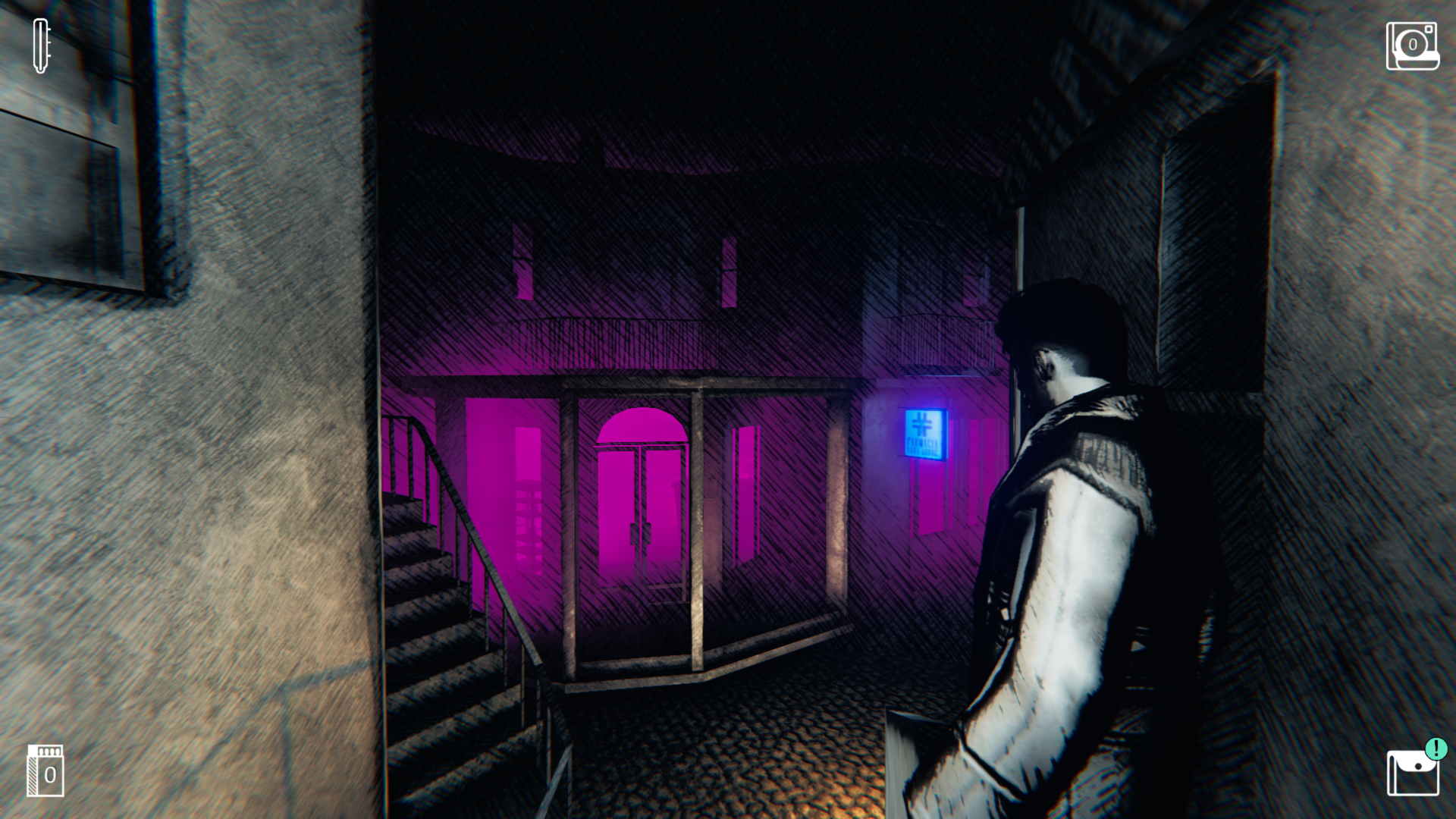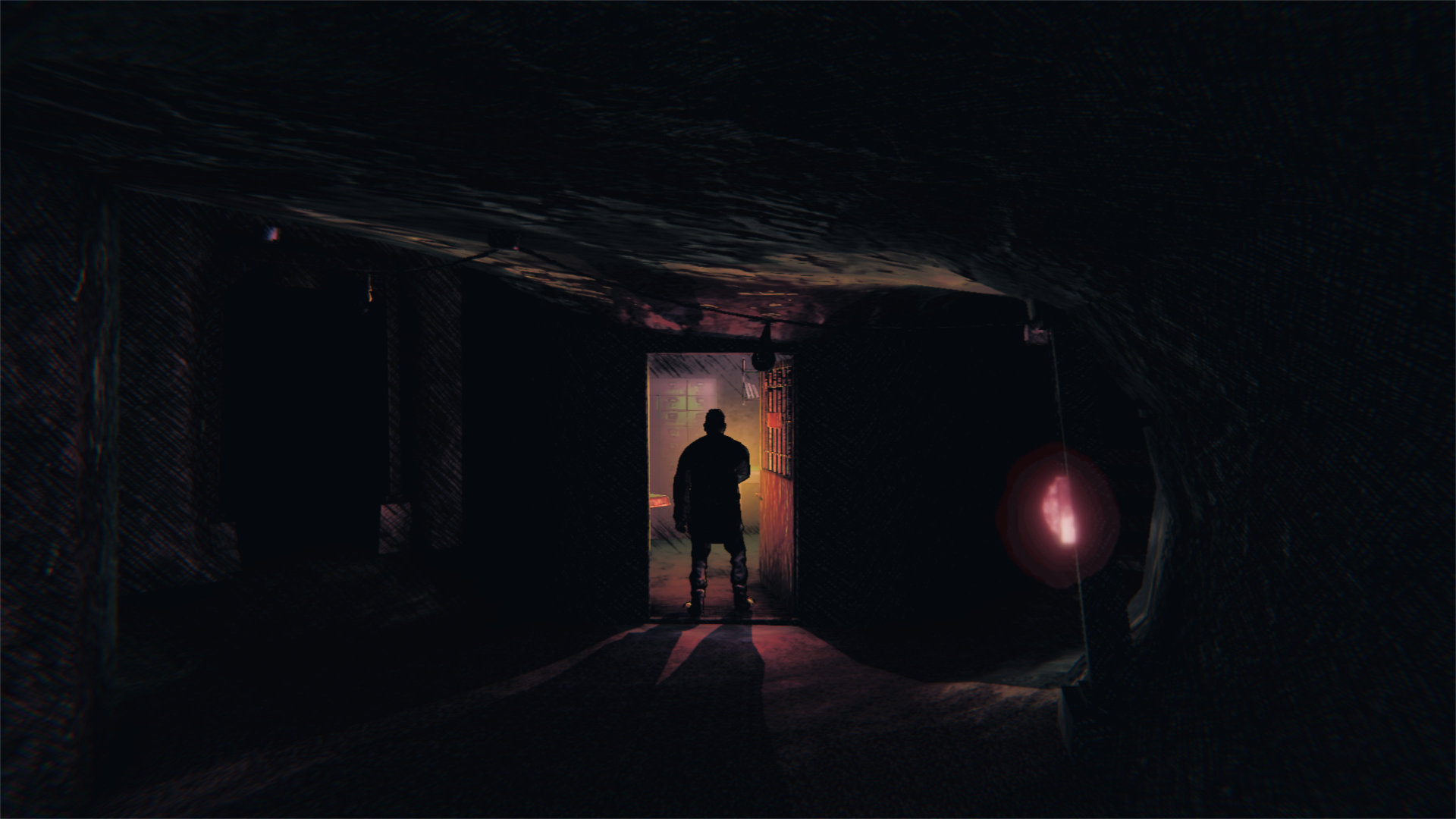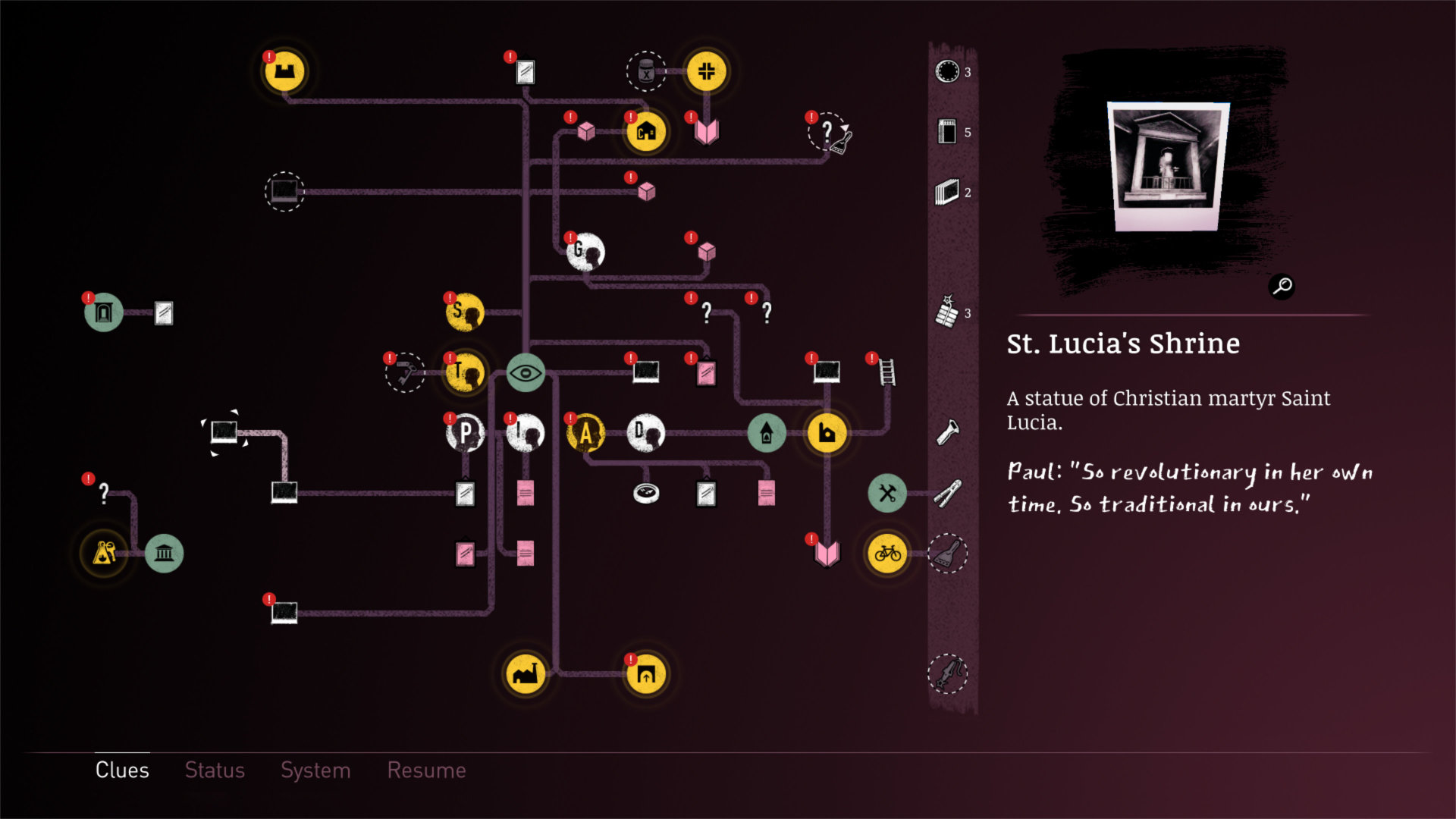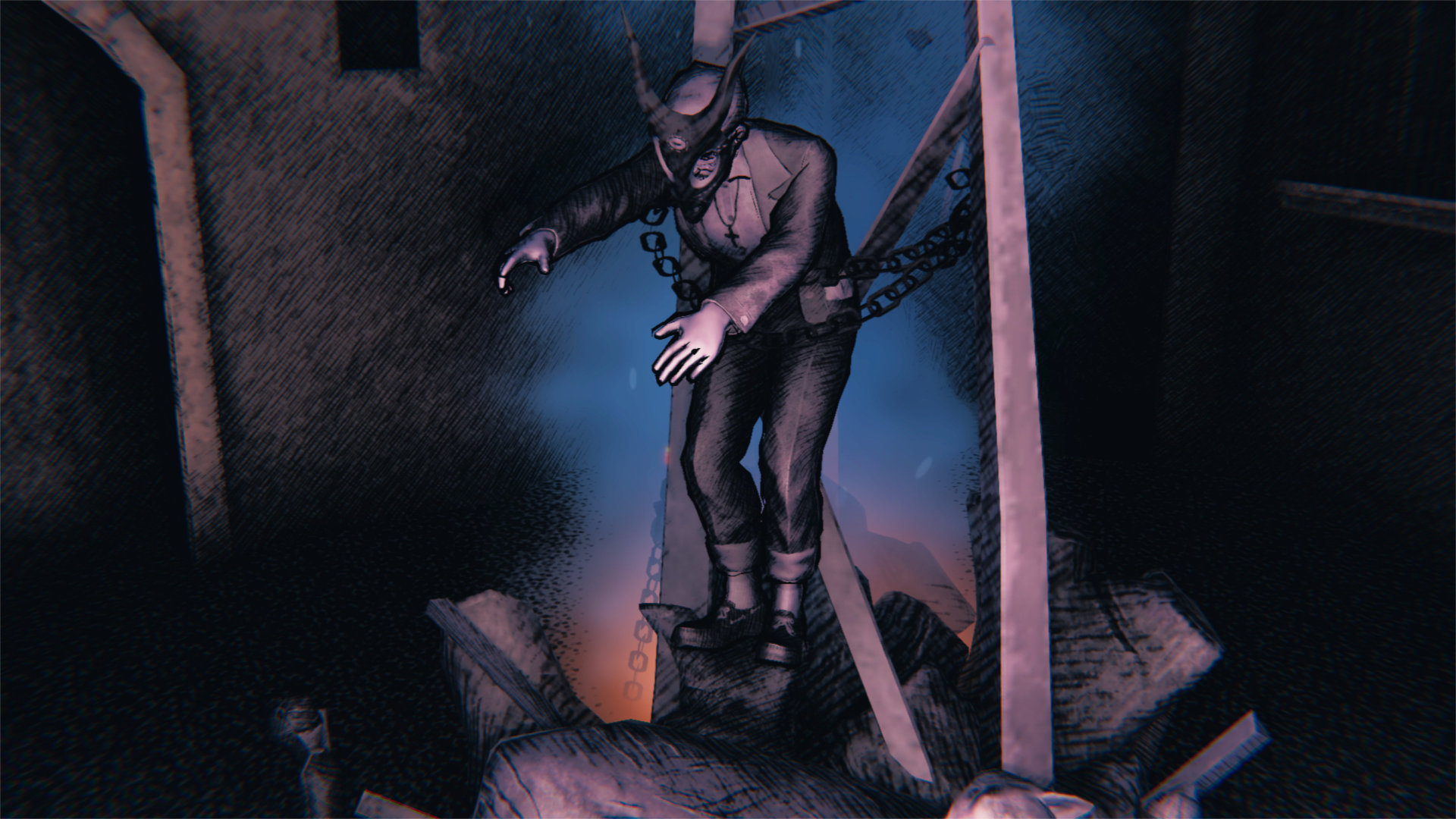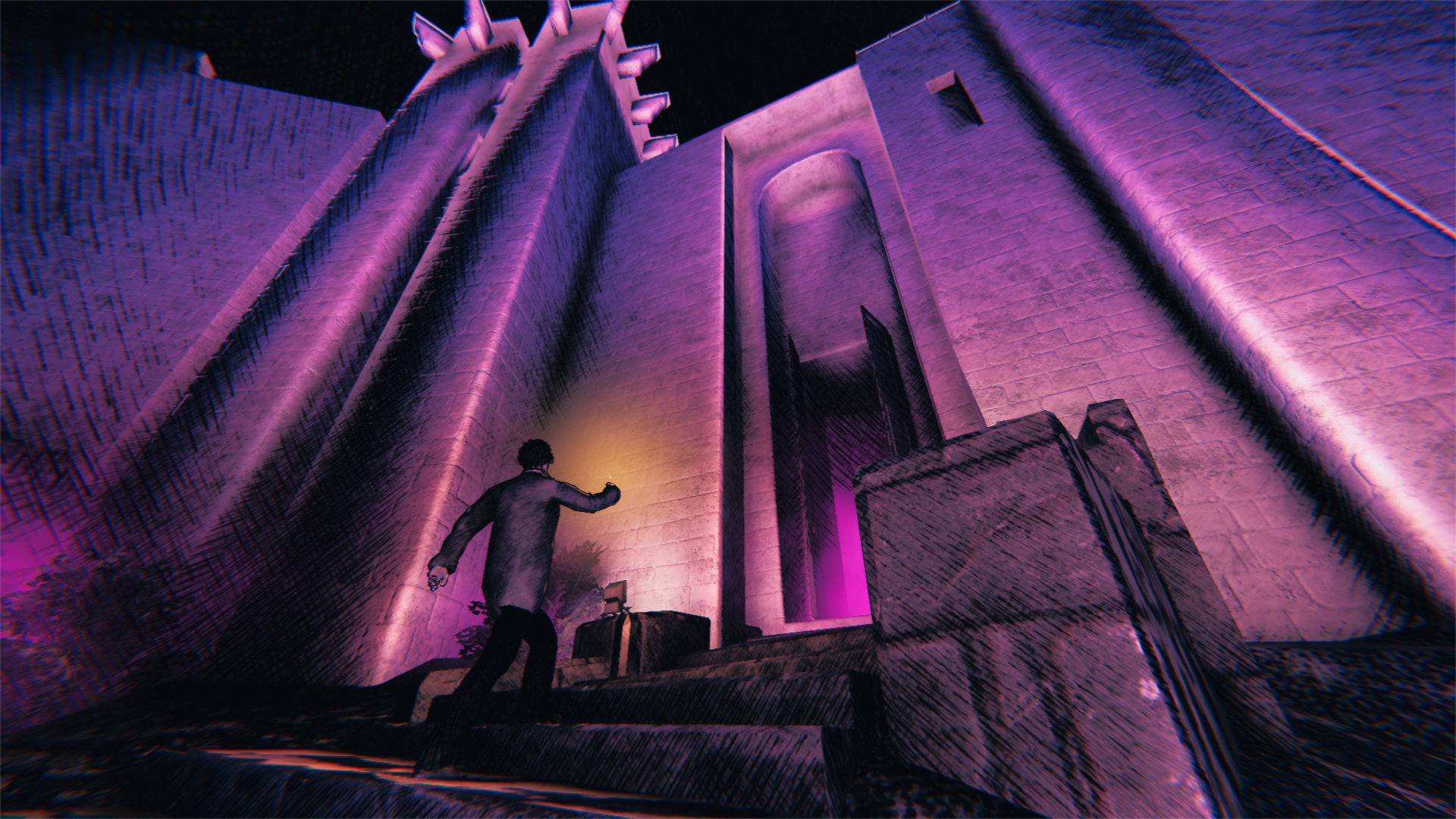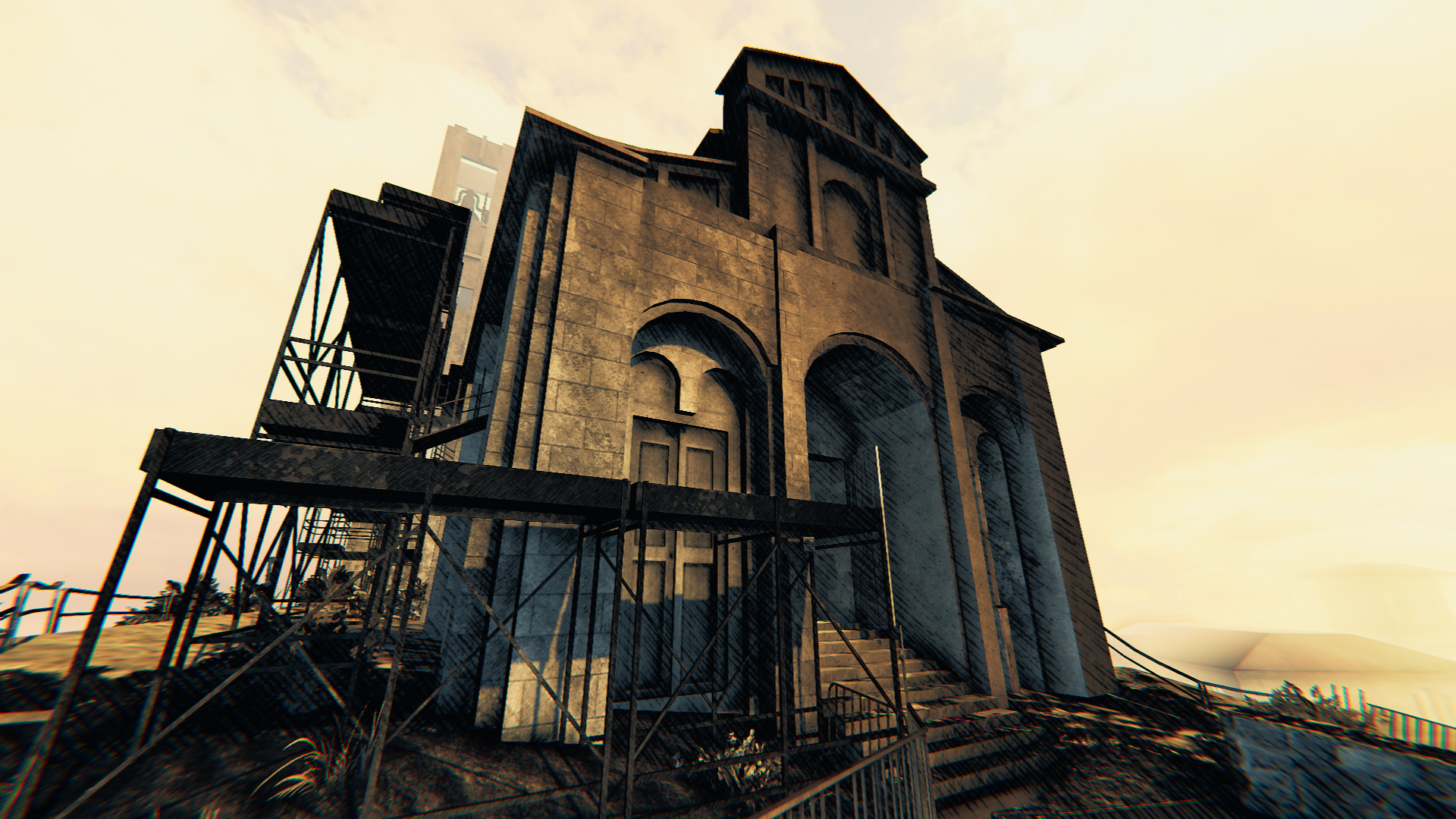The group arrives to the village for the Festival of St Lucia, a masked gathering infused with Catholic symbolism that coincides with the winter solstice. Everyone is passing through for a different reason. Anita - your starting character - is a geologist who, for the past year has been assessing the mines beneath the town for a prospective buyer. Pregnant with the child of a local churchman, with whom she has enjoyed a secretive affair, Anita is desperate to flee the debris of her recent choices. Paul is a photojournalist and orphan, who left the village as a child. He hopes his return will add substance to the translucent memory of his late parents. Drug addict Sergio also left Gravoi years ago, at the end of a relationship to an older, gentleman lover. The split left a lasting emotional wound. He has returned to the village for an emotional reckoning. And, lastly, Claudia, the daughter of the owner of a local bar, La Principessa, who for too long has ignored the strange circumstances around her aunt’s suicide. Each character has a secret they are trying to conceal or one they hope to expose. Two obstacles stand in the way of the ensemble cast’s emotional objectives: the night and the creature. Silent Hill had fog; Saturnalia has darkness: a cloying, gloopy substance that reduces visibility to a few feet and makes navigating the village enduringly difficult. There are street signs, maps on every corner, and little bonfires to act as waypoints, but finding your way remains awkward, even after hours of familiarity. Strike a match and the wriggling light will afford you a few extra feet of visibility, but matches are a scarce commodity that are best saved for exploring the mines, where there is no ambient light at all. The darkness is, in time, manageable. The creature is not. A manifestation of the town’s tangled secrets, this masked shadow monster tirelessly roams Gravoi’s streets in search of curfew-breakers. It signals its presence gradually, with the rattle of dry beans, an audio prompt that loses none of its petrifying power across the game’s dozen-or-so hour run time. Every action - walking, running, opening a door, breaking a window - produce noises that colours the sky with a neon pink wash, drawing the creature’s attention. Whichever of the four characters you’re controlling at the time can cover his or her eyes to try to avoid detection, or attempt to outrun it, but once the monster begins to give chase, you’ll curse the village, its bewildering layout, and the dripping dark. Capture does not mean death - not immediately, anyway. When caught your character will be dragged to a pyre where, if you’re quick and quiet, one of the remaining characters has a brief opportunity to free them. Fail to do so and, one by one, the four protagonists will expire. Memorising the village’s layout is only of limited use. On Game Over, Gravoi is reborn and promptly rearranged into a new hellish configuration - a design choice that will infuriate guide writers, and delight YouTubers. Saturnalia enjoys a singular style reminiscent of early 2000s abandonware games, the deliberately jerky animation accentuated with scratchy black shading, all adding to the home movie aesthetic. In contrast to the slickly produced horror of Resident Evil, Saturnalia cleaves to the guerrilla filmmaking tradition of Blair Witch Project and Slenderman, eliciting its frights not from choreographed set-pieces with carefully chosen camera angles, but from a relentlessly oppressive atmosphere interrupted by occasional bursts of sprinting terror. Despite its indie horror looks, the game draws clear inspiration from some blockbuster sources, however. The creature’s free-roaming pursuit of the player is pure Mr. X (Resident Evil 2 Remake’s dogged player-chaser); the cupboards in which characters can cringe until danger passes come from Alien: Isolation, while the only thing missing from the village’s various saferooms are typewriters on which you can save progress. Your adventure is organised and mediated via a mission screen, to which characters and clues are added upon discovery, along with useful lines that denote their relationships to one another. It’s here the game clarifies the group’s immediate objectives, both as a collective and as individuals, and the screen helps bring some order and focus. Still, at times the game’s puzzle are arcane, and managing items between the four characters can become frustrating; when you make a successful dash across town only to discover you needed to have brought, say, Paul with his camera, or Claudia with her ability to squeeze through iron bars, is intensely dispiriting. The fact that the game’s essential currencies are finite also exerts psychic pressure. You need scavenged coins to buy matches, and you need matches to light your way and explore the mine system. Even the most conscientious player will find their resources soon dwindle, naturally increasing the game’s difficulty. In time this squeezed economy exerts a significant psychological burden. Each trek across town to find some coins, to buy some matches, to light the way to your next objective is fraught with tension and anxiety. In time, even the most straightforward of tasks becomes a mountain in the mind. In this way Saturnalia requires not only dexterity in the fingers to out manoeuvre a chasing monster, but also a certain fortitude of mind to overcome moments of despondency. The game’s puzzles are appropriate to the village setting and sit harmoniously with the various interweaving stories being told. You won’t have to retrieve, say, a giant jewel from a pond and press it into a statue to unlock a door; rather, the game’s essential tools - a hammer, a pair of bolt-cutters, a soldering iron, a drywall spatula - are pleasingly mundane and root the game firmly in reality. Smash this window. Sever that chain. Without this grounding practicality, the game’s more ambitious themes, which touch on racism and homophobia, might have felt tokenistic or inappropriately paired. Instead, Saturnalia successfully establishes a relationship between its physical and spiritual horrors, which together pull the player into its unpleasant reality. Saturnalia is a horrible little video game, but horrible in precisely all the ways its makers intended.

